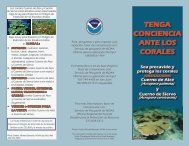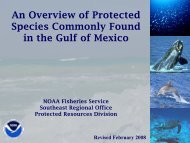NOAA Technical Memorandum NMFS-SEFSC-xxx
NOAA Technical Memorandum NMFS-SEFSC-xxx
NOAA Technical Memorandum NMFS-SEFSC-xxx
Create successful ePaper yourself
Turn your PDF publications into a flip-book with our unique Google optimized e-Paper software.
parameters (e.g. snails per colony) but not in the parameters of A. palmata size andcondition. In 2000, only snail counts and measurements were conducted, not A. palmatasize and condition. An additional survey of A. palmata size and condition was conductedat two sites (Little Grecian and Horseshoe) in Oct 1998 to assess the impact of HurricaneGeorges.Several Montastraea spp. colonies (n=5-24 colonies) were haphazardly chosen inthe vicinity of the A. palmata patches at each site. These colonies were also measured tothe nearest decimeter (length, width, height), live surface cover was estimated, andresident snail populations were surveyed (n=20-168) for comparison to A. palmata snailpopulations (Table 1).Statistical Methods:Acropora palmataThe effect of Hurricane Georges on the LAI of standing colonies (n=62-118) atLittle Grecian and Horseshoe was tested by 2-way ANOVA (SITE and HURRICANE)on transformed (X’=ln(X)) data (to achieve normality and equal variances). Change overtime (YEAR) in the total “amount” of A. palmata at the four fully censused sites (as bothtotal number of colonies + fragments or as total LAI) was tested by Repeated MeasuresANOVA on Ranks. Repeated Measures analysis was used in this case because the siteswere considered replicates (n=4) and the same sites were sampled each year. The changein average condition (estimated % live surface) of all standing colonies (sites pooled,n=472-333) was tested by one-way ANOVA (YEAR) after verifying normality and equalvariance assumptions.The incidence of specific conditions of A. palmata colonies (i.e. ThreespotDamselfish, or white band disease) was expressed as a proportion of colonies at each site.Overall snail prevalence on the A. palmata population was expressed as the mean numberof snails per sampled colony. This parameter did not meet normality and equal varianceassumptions and was not aided by standard transformations. Hence, temporal trendswere tested by 1-way ANOVA on Ranks followed by Dunn’s pairwise post-hoccomparisons. Though there is not adequate site-replication to statistically test the effects4



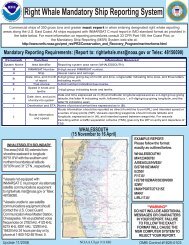

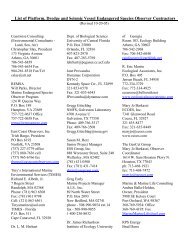
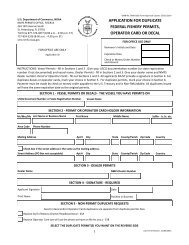
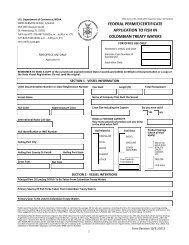
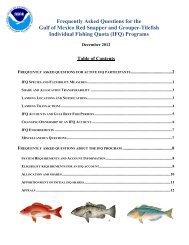
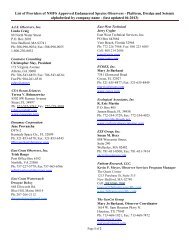
![Right Whale Fact Sheet [PDF] - Southeast Regional Office - NOAA](https://img.yumpu.com/28432664/1/190x245/right-whale-fact-sheet-pdf-southeast-regional-office-noaa.jpg?quality=85)

